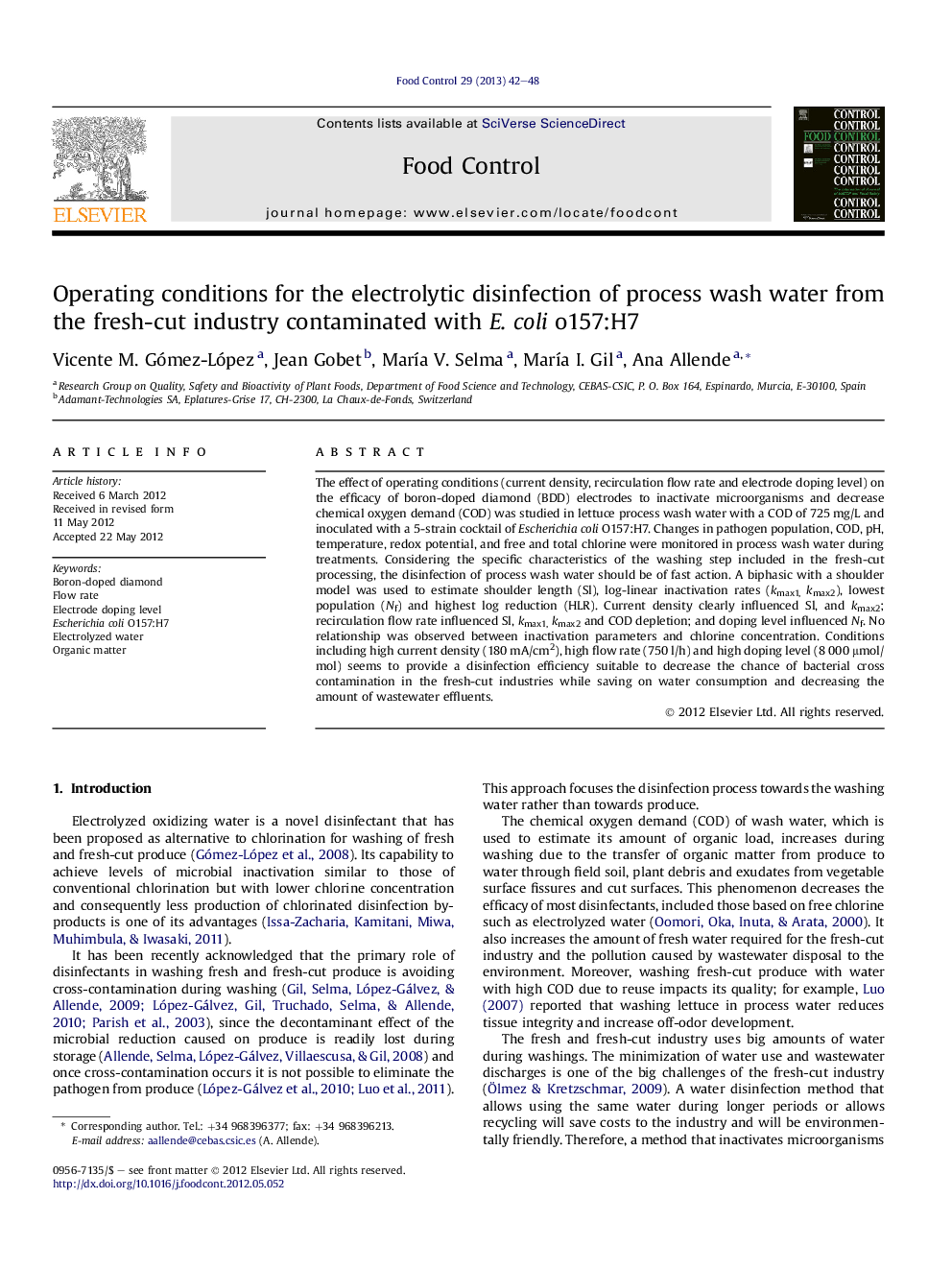| Article ID | Journal | Published Year | Pages | File Type |
|---|---|---|---|---|
| 6393968 | Food Control | 2013 | 7 Pages |
The effect of operating conditions (current density, recirculation flow rate and electrode doping level) on the efficacy of boron-doped diamond (BDD) electrodes to inactivate microorganisms and decrease chemical oxygen demand (COD) was studied in lettuce process wash water with a COD of 725 mg/L and inoculated with a 5-strain cocktail of Escherichia coli O157:H7. Changes in pathogen population, COD, pH, temperature, redox potential, and free and total chlorine were monitored in process wash water during treatments. Considering the specific characteristics of the washing step included in the fresh-cut processing, the disinfection of process wash water should be of fast action. A biphasic with a shoulder model was used to estimate shoulder length (Sl), log-linear inactivation rates (kmax1,kmax2), lowest population (Nf) and highest log reduction (HLR). Current density clearly influenced Sl, and kmax2; recirculation flow rate influenced Sl, kmax1,kmax2 and COD depletion; and doping level influenced Nf. No relationship was observed between inactivation parameters and chlorine concentration. Conditions including high current density (180 mA/cm2), high flow rate (750 l/h) and high doping level (8 000 μmol/mol) seems to provide a disinfection efficiency suitable to decrease the chance of bacterial cross contamination in the fresh-cut industries while saving on water consumption and decreasing the amount of wastewater effluents.
⺠Electrolytic disinfection was tested in model process wash water from the fresh-cut lettuce. ⺠Escherichia coli O157:H7 has been used as a model, due to its relevance in the fresh-cut products. ⺠Selection of operating conditions (current density; flow rate; doping level) improves disinfection efficiency. ⺠Operating conditions seem suitable to decrease the chance of bacterial cross contamination in the fresh-cut industries. ⺠They also reduces water consumption and decreasing the amount of wastewater effluents.
